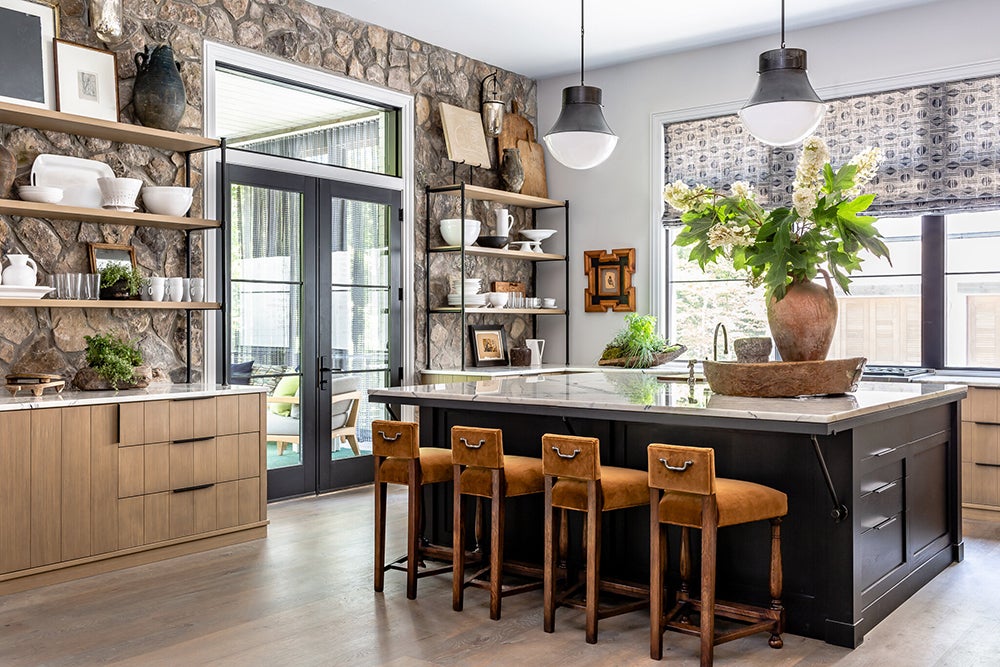Every once in a while, you’re bound to have a client who thinks that their repeat viewings of Fixer Upper mean they know as much about interior design as you do. We asked eight designers—Ariene C. Bethea, Liz Caan, Gabriela Gargano, Yvonne McFadden, Nina Nash, Josh Pickering, Jan Showers and Erika Hollinshead Ward—how they deal with know-it-all clients.

on a diplomatic mission
“I haven’t had many know-it-all clients, but they do pop up from time to time! I am not one to roll with it—they have hired me for my expertise and should expect me to express my opinions. Diplomacy is the key word here. My mother—who really should have been an ambassador—taught me by example that diplomacy will get you everywhere. So when someone expresses an opinion about how to design a room that I totally disagree with, the first thing I do is let them know why that won’t work—they need to know the reasons, and believe me, there are always reasons when a bad idea doesn’t work! But it can be done in a kind manner with a rationale that makes sense. If that doesn’t work and a client isn’t nice about their opinions, they may need to consider changing designers.” —Jan Showers, Jan Showers & Associates, Dallas

know when to Let it go
“Those clients can be really tough and usually are the most stressful ones—meditation and red wine help! Generally, I will gently but firmly give my point of view, but at the end of the day, it is about making the client happy, and sometimes I need to realize that it’s not worth making my client feel that their opinion doesn’t matter. Most issues do get resolved if you talk it out and meet each other halfway—there’s nothing worse than a pushy decorator. I never want to be like that. In the rare instance when they won’t budge, I just take a deep breath and let it go—but we will be switching out that hideous painting that they just had to have for the photo shoot!” —Nina Nash, Mathews Design Group, Atlanta

good listener
“I think in these cases, maybe in previous experiences they felt like they had a designer that wasn’t really listening to them. And so I think part one of that is making sure that they feel they have a voice that we’re listening to—whether it’s about the functional needs they have or a color they like—so that they have a great platform to communicate with us. You have to build up trust, because I’ve found that when clients are that way, it usually boils down to a trust issue. By making sure that we get to a solid place early on, the project will go a lot smoother.” —Gabriela Gargano, Grisoro Designs, New York

start strong
“Sometimes you have to cautiously apply ‘mean girls’ tactics up front in order to set boundaries and expectations for certain clients. For example, although I am busy, I might ‘miss’ a few extra calls in order to passively encourage a frequent caller to lump all of their thoughts into one more productive call later. With know-it-all clients, I look for multiple opportunities to show them a better solution in a way that politely discredits a lesser idea—and to reinforce the fact that they hired me for a reason.” —Josh Pickering, Pickering House Interiors, Dallas

Win-win
“I usually roll with it when it comes to know-it-all clients. Honestly, if we are doing our job well, the client will quickly realize that this is our area of expertise and hopefully, they’ll end up being excited to learn something new. We like to help our clients make educated decisions, so we are always presenting the pros and cons of an idea, a selection or a potential decision. I believe that type of information should be shared so that everyone feels part of the project, and in turn, everyone wins.” —Liz Caan, Liz Caan & Co., Newton, MA

talk it out
“I go along with it at first. These types of clients are typically harmless, but in my experience, simply asking a few clarifying questions reveals to them they haven’t thought through the entire design and aren’t the professional, without me having to say another word, thus quieting any further noise.” —Ariene C. Bethea, Dressing Rooms Interiors Studio, Charlotte, NC

no Second-guessing
“We recently started a project and the client liked our concept imagery. We started sourcing and she would approve things—and then a few days later send us images of other pieces of furniture she’d found online, and say that she had changed her mind [and] wanted to go with [those] instead. These pieces were not high-end, not high-quality, not well designed. It started to become clear that our idea of what would look good in her apartment was not going to align, and I [ultimately] suggested that we part ways. It’s important to be collaborative, but clients hire us to be their guides and to elevate their ideas. For this client, I didn’t feel that I could provide her what she was looking for. Our ideas were too different.” —Lucy Harris, Lucy Harris Studio, New York

lead with empathy
“A knowledgeable client can greatly contribute to the success of their project as long as they don’t get in the way of progress. I believe any project can benefit from multiple perspectives, even if only one triumphs over them all. If you are able to work with a know-it-all client, you leave them with the satisfaction of being heard and understood. As designers, we are often responsible for giving clients the consideration and affirmation they need from an emotional standpoint. A designer who knows how to do both will ultimately find greater success and lots of referrals.” —Erika Hollinshead Ward, Erika Ward Interiors, Atlanta

find a good balance
“We've found [that] a give-and-take balance is crucial to building trust with the client. Since it is ultimately their home, we want to make sure the spaces are functional for their needs, but also want to input our expertise to ensure the project is cohesive and timeless.” —Yvonne McFadden, Y. McFadden Interiors, Atlanta
Homepage photo: Courtesy of Y. McFadden Interiors





























